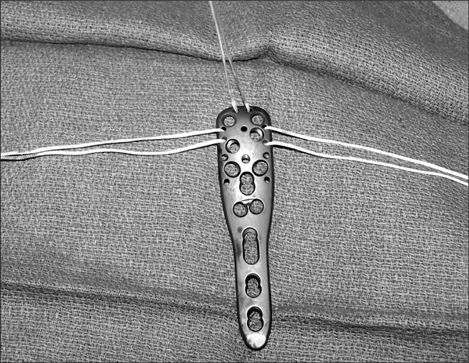Clin Orthop Surg.
2012 Dec;4(4):321-324. 10.4055/cios.2012.4.4.321.
Fixation Strategies to Prevent Screw Cut-Out and Malreduction in Proximal Humeral Fracture Fixation
- Affiliations
-
- 1Department of Orthopaedic Surgery, Hospital of the University of Pennsylvania, Philadelphia, PA, USA. Samir.Mehta@uphs.upenn.edu
- 2Jefferson Medical College, Rothman Institute, Philadelphia, PA, USA.
- 3Cleveland Clinic Orthopaedics, Middleburg Heights, OH, USA.
- 4Penn Presbyterian Medical Center, Philadelphia, PA, USA.
- KMID: 1719301
- DOI: http://doi.org/10.4055/cios.2012.4.4.321
Abstract
- Fixation of proximal humerus fractures with precontoured, fixed angle devices has improved operative management of these difficult injuries, particularly in patients with osteoporosis. However, recent data has revealed that fixation with these constructs is not without complications, particularly screw cut-out and loss of reduction. Multiple strategies have been developed to decrease the number of complications. We offer a surgical technique combining suture augmentation of the proximal humerus with locked plate fixation utilizing short screws.
Keyword
MeSH Terms
Figure
Reference
-
1. Fankhauser F, Boldin C, Schippinger G, Haunschmid C, Szyszkowitz R. A new locking plate for unstable fractures of the proximal humerus. Clin Orthop Relat Res. 2005. (430):176–181.
Article2. Koukakis A, Apostolou CD, Taneja T, Korres DS, Amini A. Fixation of proximal humerus fractures using the PHILOS plate: early experience. Clin Orthop Relat Res. 2006. 442:115–120.3. Charalambous CP, Siddique I, Valluripalli K, et al. Proximal humeral internal locking system (PHILOS) for the treatment of proximal humeral fractures. Arch Orthop Trauma Surg. 2007. 127(3):205–210.
Article4. Egol KA, Ong CC, Walsh M, Jazrawi LM, Tejwani NC, Zuckerman JD. Early complications in proximal humerus fractures (OTA types 11) treated with locked plates. J Orthop Trauma. 2008. 22(3):159–164.
Article5. Owsley KC, Gorczyca JT. Fracture displacement and screw cutout after open reduction and locked plate fixation of proximal humeral fractures. J Bone Joint Surg Am. 2008. 90(2):233–240.
Article6. Badman BL, Mighell M. Fixed-angle locked plating of two-, three-, and four-part proximal humerus fractures. J Am Acad Orthop Surg. 2008. 16(5):294–302.
Article7. Horak J, Nilsson BE. Epidemiology of fracture of the upper end of the humerus. Clin Orthop Relat Res. 1975. (112):250–253.
Article8. Neer CS 2nd. Displaced proximal humeral fractures. I. Classification and evaluation. J Bone Joint Surg Am. 1970. 52(6):1077–1089.9. Mills HJ, Horne G. Fractures of the proximal humerus in adults. J Trauma. 1985. 25(8):801–805.
Article10. Koval KJ, Gallagher MA, Marsicano JG, Cuomo F, McShinawy A, Zuckerman JD. Functional outcome after minimally displaced fractures of the proximal part of the humerus. J Bone Joint Surg Am. 1997. 79(2):203–207.
Article
- Full Text Links
- Actions
-
Cited
- CITED
-
- Close
- Share
- Similar articles
-
- Medial and Lateral Dual Plate Fixation for Osteoporotic Proximal Humerus Comminuted Fracture: 2 Case Reports
- Fixation Failure of Unstable Intertrochanteric Fracture of the Femur Using Compression Hip Screw
- Surgical Treatment of the Unstable Fractures of the Proximal Humerus: Consideration of Surgery-related Problems and Complications
- Treatment of the Proximal Humeral Fracture by Bent Semitubular Plate
- Rupture of the Extensor Pollicis Longus Tendon at the Proximal Screw of Volar Plate Fixation for Distal Radius Fracture: A Case Report




